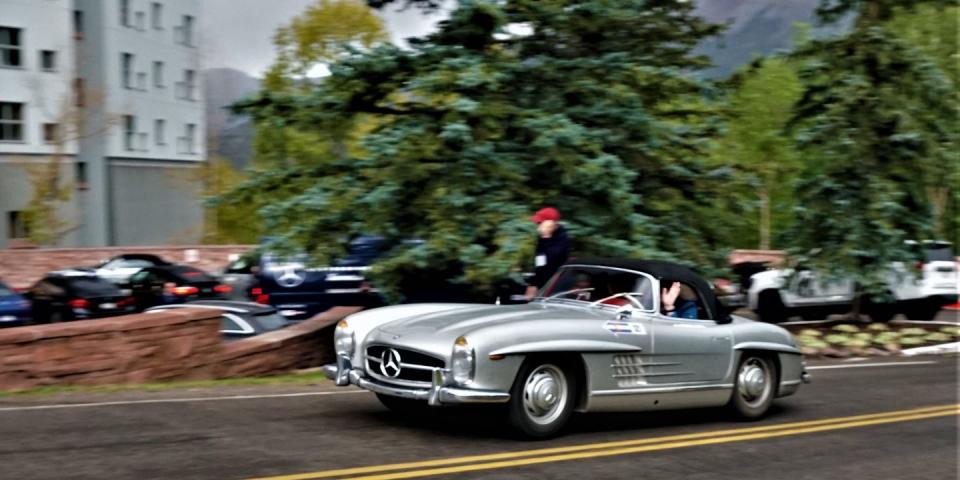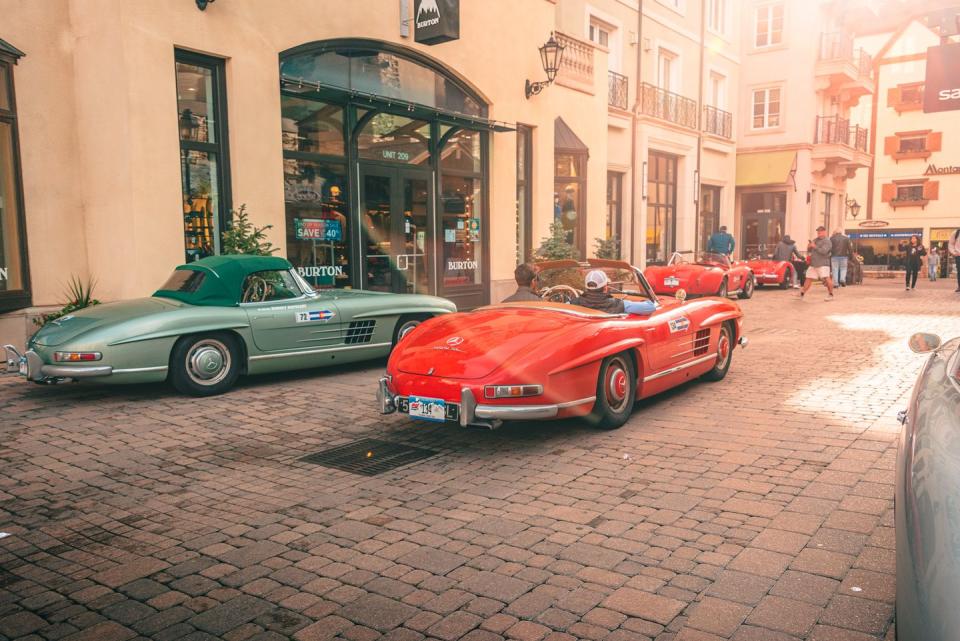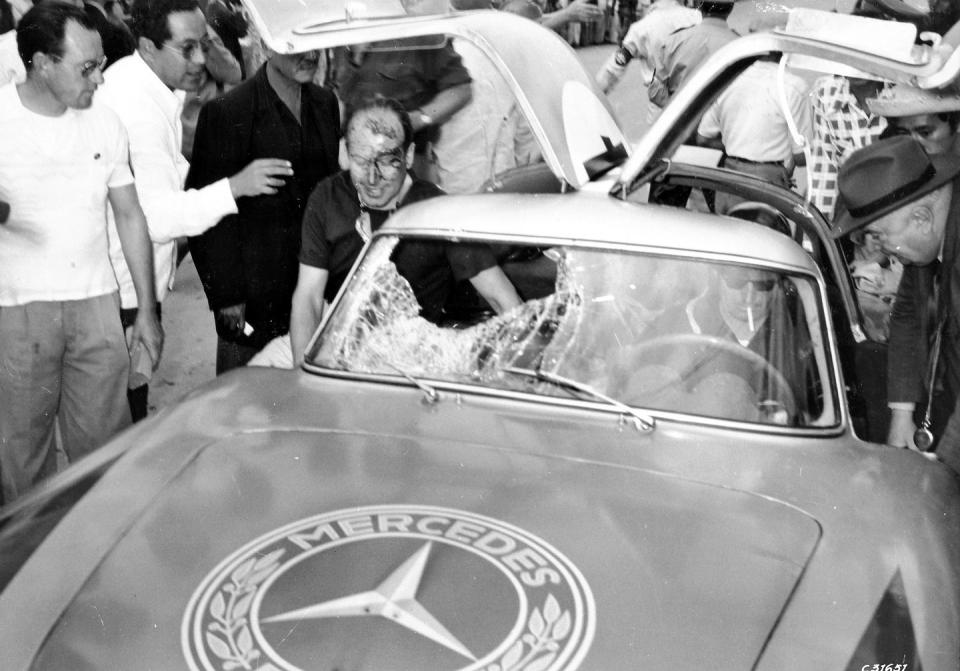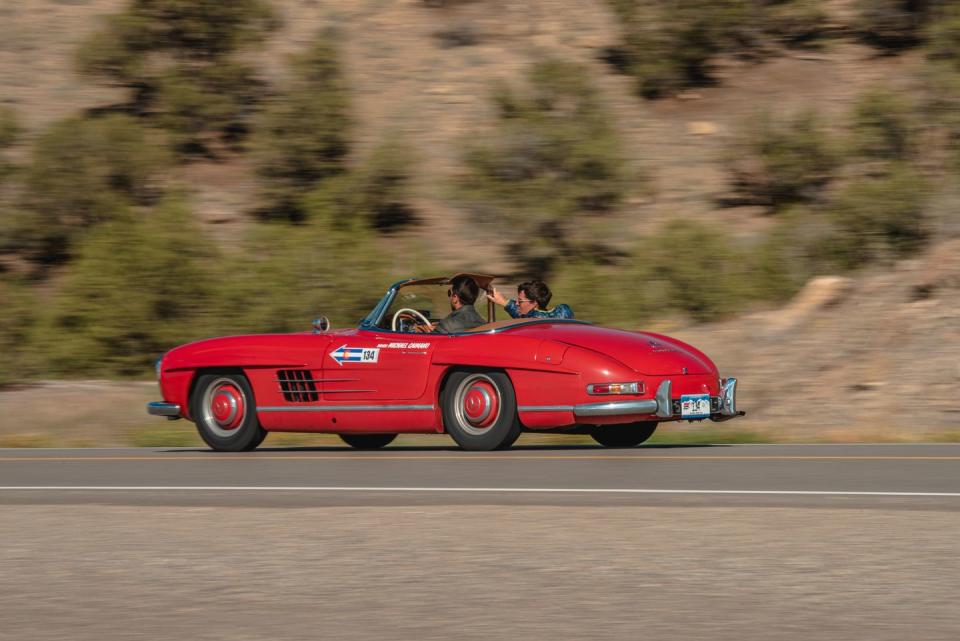1000 Glorious Miles in a 1958 Mercedes-Benz 300 SL Roadster

The Mercedes-Benz 300 SL Roadster is the direct descendant of the mighty 300 SL Gullwing, and in many ways, it’s a better car to drive.
I found this out after driving in the 1000-mile Colorado Grand in a 1958 300 SL roadster. I had weaseled my way onto the Grand for a day, not sure exactly with whom or in what car I might drive. Could have been any number of very cool cars that populate the Grand, a round-the-state tour of the best parts of Colorado. But Mercedes-Benz is a major sponsor of the Grand, and my friend (everyone’s friend) Mike Kunz, director of the Mercedes Classic Center, was there in a 1958 300 SL Roadster in perfect Silver-Arrow silver, and he asked if I’d like to drive with him for the day.
Things work out every now and then.

The roadster was the successor to the more-famous hard-topped Gullwing, with its famous swing-up doors, which itself was based on the gullwinged W194 race car. This thing ruled racing in the early 1950s. It started out with a second-place finish in the Mille Miglia, then took first and second at Le Mans, went 1-2-3 at the Nürburgring, and finished another 1-2 at La Carrera Panamericana. The latter win was accomplished after the car of Karl Kling famously experienced a bird strike, taking a buzzard to the windshield at 135 mph on the passenger’s side and knocking out co-driver Hans Klenk. When Klenk came to, bloodied and covered in glass and feathers, he urged Kling to keep going. “Mach weiter,” he might have said. “Es ist nur ein wenig Blut und Federn!”
Those were the days.

From the W194 came the 300 SL Gullwing from 1954 to 1957, and then the 300 SL Roadster from 1957 to 1963. It’s hard to overstate just how cool these cars were. Fangio had one, Picasso had one, Lance Reventlow, Clark Gable, Briggs Cunningham, Yul Brenner, and Frank Lloyd Wright all had 300 SLs. If you were cool in the 1950s and liked to drive fast cars, you had a Mercedes 300 SL.
They were based around a chromoly tubular space frame, with independent suspension including a swing axle at the rear. Power came from a 3.0-liter OHC straight-six making either 220 hp or 240 hp (depending on your source) and 294 lb-ft of torque via the first use of mechanical fuel injection in a production car. That was mated to a four-speed manual transmission. Curb weights varied from 2855 to 3131 pounds, and 0-60 mph was listed from 7.7 to 9.3 seconds, slow by today’s standards but pretty quick for the 1950s. Depending on what final drive you chose, top speed was as high as 163 mph.
Mercedes’ ad slogan when it came out was, “Only Flying Is Better.” It might have even been better than flying. Depending on what model and what year you got, you could get an aluminum hood, roof, and deck lid, as well as disc brakes, features usually only found on race cars of the time.
Griff Borgeson wrote in the April 1956 issue of Sports Car Illustrated: “After exhaustive road testing of a standard 300 SL, after driving impressions in a race-tuned version and interviews with several owners and specialist technicians, I’m ready to haul off and make a flat, unequivocal statement: This is the finest production sports car in the world. No exceptions, no qualifications. On all critical counts, it scores.”
“They’re great cars,” said Scott Grundfor, who has been restoring Gullwings and SLs for over 40 years at Scott Grundfor Co. in Arroyo Grande, California. “It’s one of the few cars that, the design of both of the Gullwing and the Roadster are pretty great. Most cars, I think something happens as time goes on and they fall out of fashion. But 300 SLs, there’s just not a bad angle on them. They’re just very well-done, beautiful cars. They’re durable. In the 40 years, 45 years, I’ve been working on them I’ve never seen one that had major damage. It just doesn’t happen. They’re super tough."


 Yahoo Autos
Yahoo Autos 